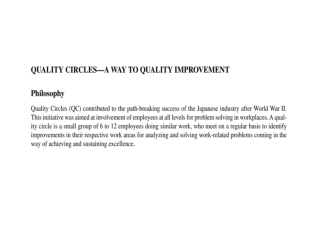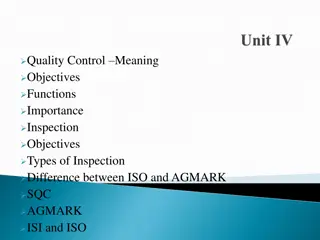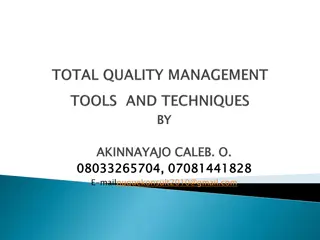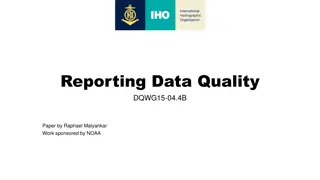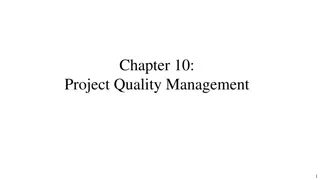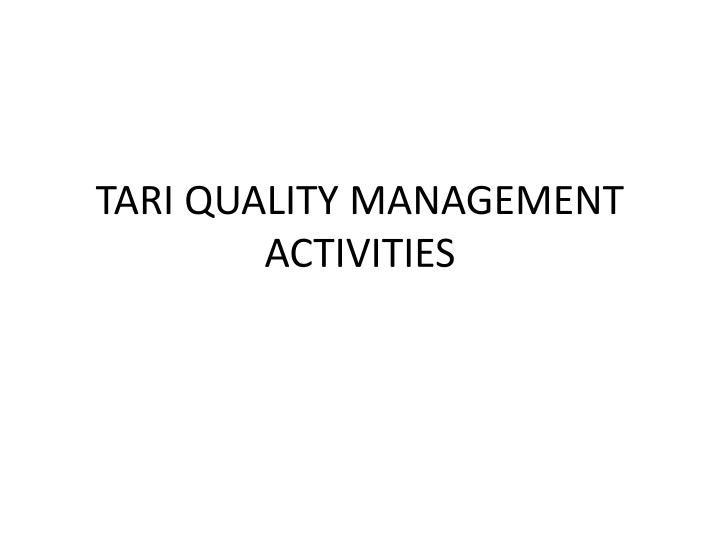
Improving Data Quality in Cassava Breeding Activities
Enhance the quality of data and trials in cassava breeding through activities like flowering enhancement, routine data collection, site preparation, and future plans such as genetic fingerprinting and exchange visits. Q-champs play a key role in quality management and collaboration within the program.
Download Presentation

Please find below an Image/Link to download the presentation.
The content on the website is provided AS IS for your information and personal use only. It may not be sold, licensed, or shared on other websites without obtaining consent from the author. If you encounter any issues during the download, it is possible that the publisher has removed the file from their server.
You are allowed to download the files provided on this website for personal or commercial use, subject to the condition that they are used lawfully. All files are the property of their respective owners.
The content on the website is provided AS IS for your information and personal use only. It may not be sold, licensed, or shared on other websites without obtaining consent from the author.
E N D
Presentation Transcript
TARI QUALITY MANAGEMENT ACTIVITIES
1. Activities to improve quality of data/trials Establishment of the crossing block Prior flowering and genotypic information for the parental clones. Control measures for the abiotic and biotic factors such as green mites, wind, mole rate, and drought. Site characterization Flowering enhancement techniques such as application of PGR for poor flowering genotypes.
Contd Routine data collection Experimental plots should be well labeled to avoid confusion. Data collection protocol (s) should be familiar to the team members. Materials needed for each activity should be in place before actual data collection e.g. trial layout, e-tablets, weigh balance etc. Standardization of the workload and personnel needed.
Contd Site selection and land preparation Historical background of the area. Soil characteristics, vegetation cover and topography. Effective land ploughing and harrowing to reduce heterogeneity within a replication and plot.
Contd Preparation of planting materials and planting time Planting materials should be of the same size to avoid heterogeneity within a plot. Planting materials should be from the semi- hard wood part of the plant. Planting materials should be free from diseases and pest which affect vigour etc. Clones should be planted when there is enough soil moisture. Trial and clones should be well labeled before planting to avoid mixing.
2. Plans for future activities Barcoding all the present and future clones in all trials. Genetic finger printing of clones at advanced stage of evaluation. F1 verification. Installation of whether station in all experimental sites. Exchange visit to harmonize activities within cassava breeding programmes. Routine in-house training within TARI cassava breeding programme.
3. Role of Q-champs Assisting in quality management of the activities in Cassava breeding programme. Sharing of activity updates across NextGen project partners. Assisting in developing BPMs and SOPs.

